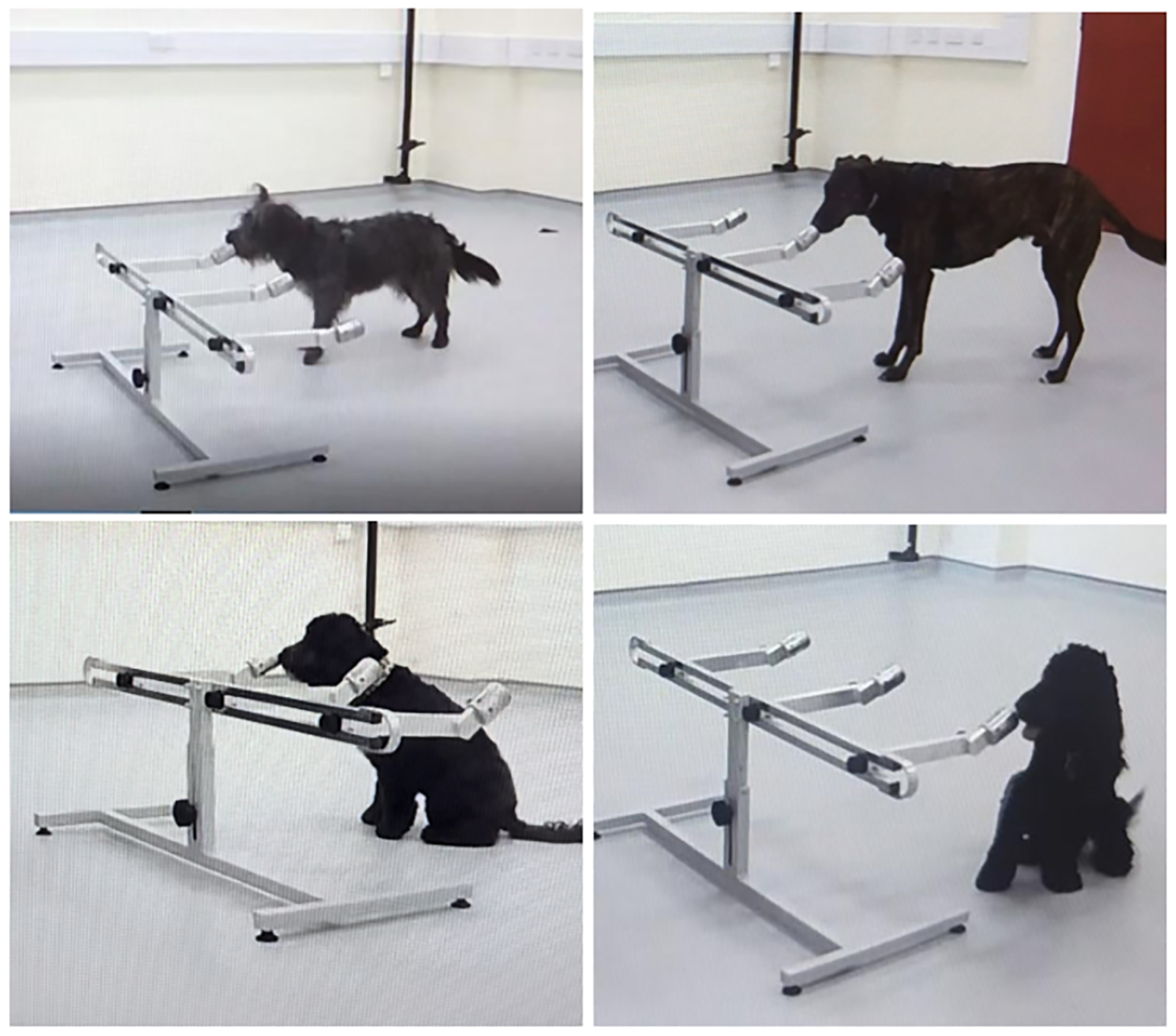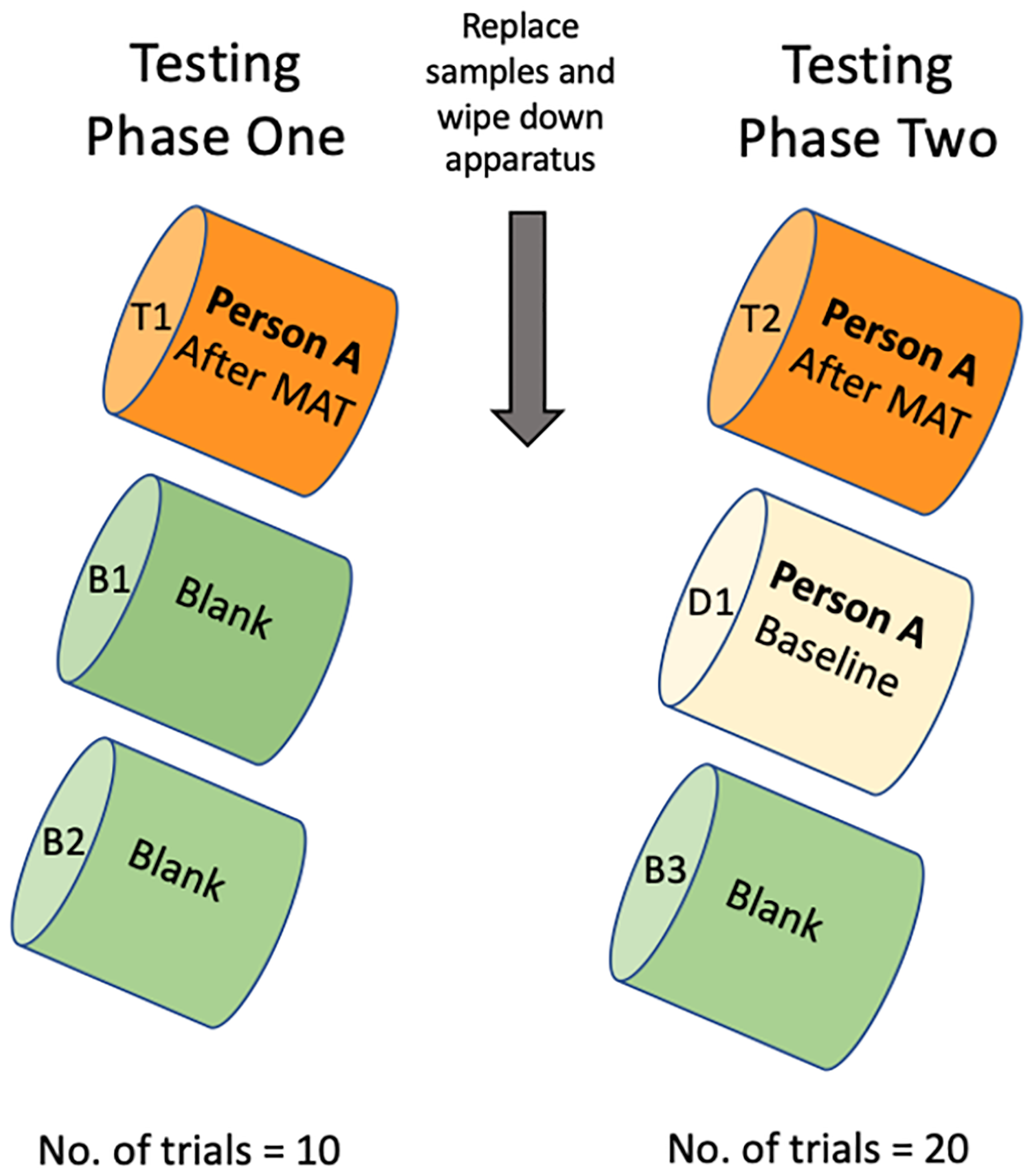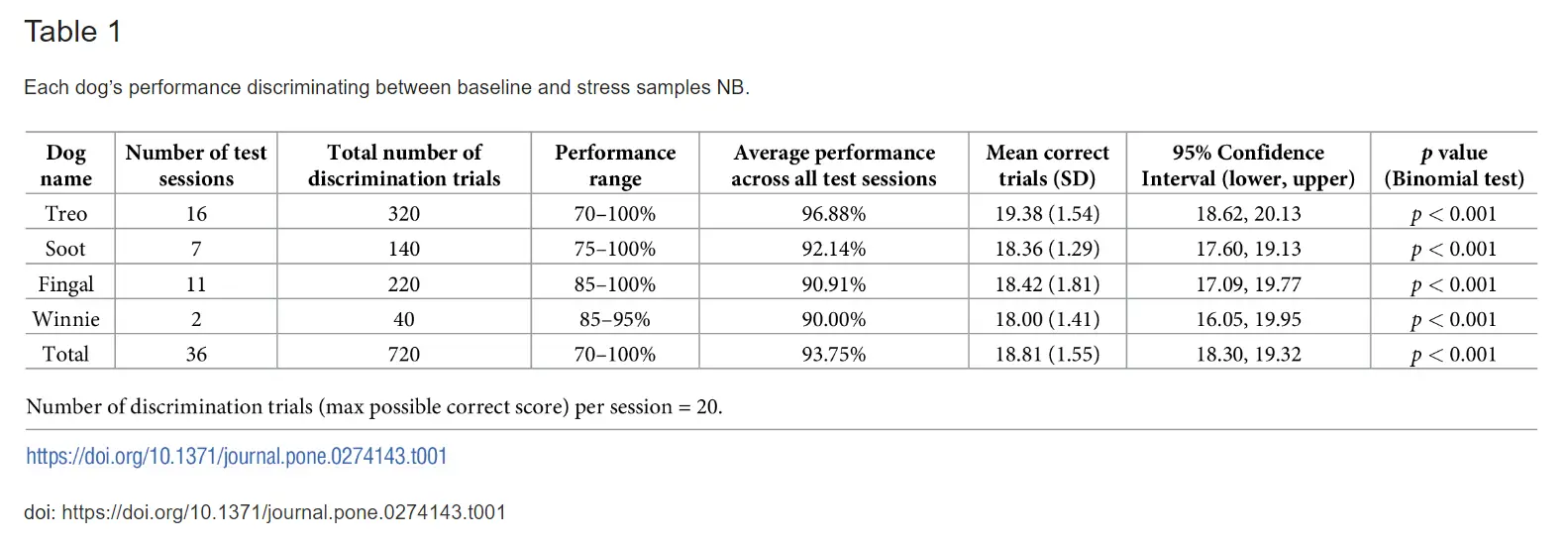A recently published study reported that dogs smell stress on us. Yep, we kind of stink in different ways when stressed, and our dogs know that. Let's go beyond the headlines and look at the canine scent work strategies researchers used to figure this out.
More...
In a study published in September 2022, researchers tested to see if dogs can discriminate between human baseline odors and psychological stress odors, "using a double-blind, two-phase, three-alternative forced-choice procedure."
Much like those studies of dogs detecting COVID, the canine nose is technically responding to volatile organic compounds (VOC) people exude in times of stress.
To avoid any influence from researcher’s faces, tone of voice, or social context, dogs checked the samples without people present. Each piece of gauze sat inside a metal container, with holes in the top, at the end of a long metal arm.
Dogs Smell Stress Study Protocols
The study involved 36 human participants and 4 canine participants. Basically people breathed on a piece of gauze then wiped the backs of their necks two separate times:
- Once while "completely relaxed" (baseline sample)
- Once after taking a 3-minute math test (stress sample)
The 4 dogs went through a total of 720 trials completed in 36 sessions. Each session featured 10 Phase One training trials and 20 Phase Two discrimination trials.
Researchers used operant conditioning and positive reinforcement to teach the dogs about alerting to a target odor (scent sample from one of the researchers). Initially, they used the food pairing method, where the target odor and reward sit together. For a variety of reasons (including dog frustration and vocalization), different dogs used different alert behaviors in front of the metal container with odor in it.
Excerpt: "During this phase of training, practice breath/sweat samples were collected from a member of the research team and placed inside a designated practice port along with a small piece of food..."
"When the indication behaviour was sufficiently developed, food port (containing a breath and sweat sample with food) was placed on the apparatus with two other ports holding blank samples (glass vials containing unused gauze) and the dogs were allowed to search all three ports. When a dog searched the three ports and indicated on the food port, the clicker was activated, and the dog received a food reward. Once a dog was able to successfully find, and indicate on, the food port for a minimum of eight of out 10 trials, the food port was phased out. Here, the food item was removed from the port, but the port was not cleaned so that the breath and sweat sample was paired with a residual food odour. When a dog could successfully indicate on this port in a further eight out of 10 trials, a novel clean port that had never held food was then introduced."
Dogs Smell Stress Study Odor Selection Process
At first, the dogs encountered 2 blanks and 1 target (baseline for person A). Then, dogs chose between 1 target (baseline for person A), 1 distractor (baseline for person B), and 1 blank.
Stress Odor Samples Stage
Then, researchers tested the dogs on a person's stress sample and 1 blanks before challenging them to choose the stress sample when also presented with the same person's baseline sample and one blank.
Dogs Smell Stress Study Results
Excerpt: "Performance ranged from 90.00% to 96.88% accuracy with a combined accuracy of 93.75% (N trials = 720)."
If we round up that's an average accuracy of 94%, wow! Right?
Here's how the different dogs did (link to results chart since the image below is hard to read). Looks like Treo (either the cocker spaniel or the cockapoo, not sure on breed from photos) with 96.88% success.
So, that's how we know dogs smell stress.
They can choose between how someone smells normally and how they smell when stressed. Neat, huh?








Interesting study. A personal experience happened while going thru chemo for breast cancer – our dogs seemed to know when my counts were too low, this happened several times during my treatments. I told my drs and they actually put it in my records, that was almost 28 years ago. Once I was better they never acted that way again.